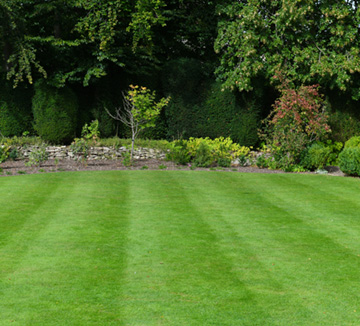
Have you found a lump, bump, or hole in your lawn? This is a common problem for most homeowners. Lawns can settle over time and become less-than-perfect no matter what type of grass you have. The good news is — you can fix an uneven lawn and amp up your curb appeal in the process. Here’s what you need to know to get the job done.
Determine what’s causing the problem
Before you begin leveling out your lawn, you should get to the bottom of why it’s uneven in the first place. For example, if you have an indentation in the lawn near water pipes that is causing drainage issues, then you should consult a professional to repair the pipes. Other things that can cause your lawn to become uneven include:
- Ground settling because of seasonal freeze/thaw cycles.
- Diseased grass.
- Buried objects, like dead tree roots that decay and sag.
- Animals burrowing under the grass.
Choose the right time
If you’re going to fix your uneven lawn, then you need to choose the proper time. The best time to fix your lawn is during the active growing season. In most locations this is from spring to mid-autumn. Try to avoid repairing the lawn in the heat of summer when it is already stressed from lack of water and high temperatures. Choose a cooler stretch of weather when your grass will have a better chance of recuperating.
Fixing shallow holes with topdressing
The easiest way to fix a shallow hole in your lawn is by topdressing. It’s best to choose a topsoil that matches the area you’re trying to repair. If possible, take topsoil from another area of your yard, perhaps a garden bed. In cases where topsoil is not available, sand can also be used. Prepare your grass by mowing it with the mower on the lowest setting. Aerate and dethatch or rake the area. Apply the topdressing with a shovel a little bit at a time. Avoid completely covering the grass and rake to even out the topdressing. Then water the grass. You can also reseed the area at this time if you like. Be sure to keep it watered throughout the season. If the topdressing settles and there’s still a depression, repeat the process.
Fixing shallow holes with dirt
Another popular technique to fill shallow holes is to lift up the turf and sweep dirt underneath. Cleanly cut the turf around the area that is sunken and carefully remove. Spread a layer of topsoil or potting soil to level the area and water to remove air pockets. Then replace the turf and press into place. Keep an eye on the patch and water as needed.
Fixing deeper holes
If you’ve got a hole that is deeper than two inches, then your best bet is to fill the hole with soil mix and reseed. It will be easier to get new grass to grow in this area than to try to topdress the existing grass. Make sure to compact the soil so it settles to the right height and keep the area watered throughout the season.
Compliments of Virtual Results


